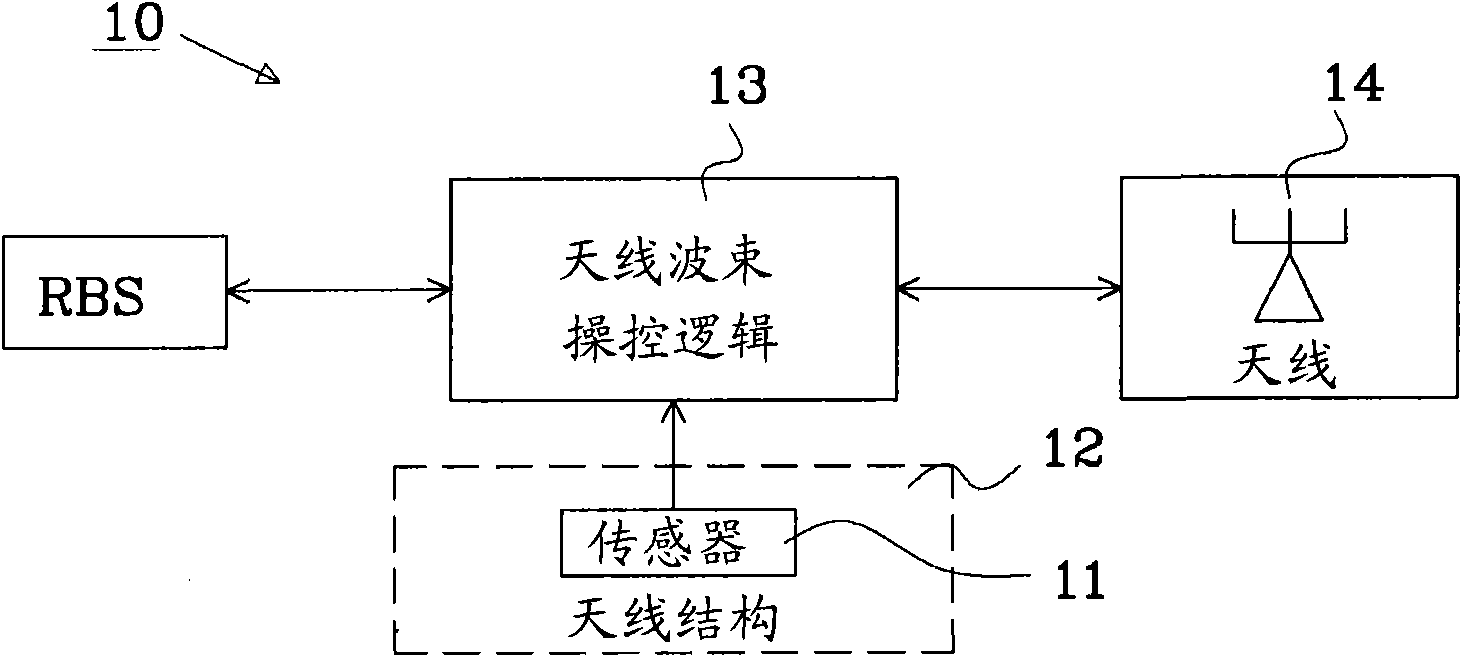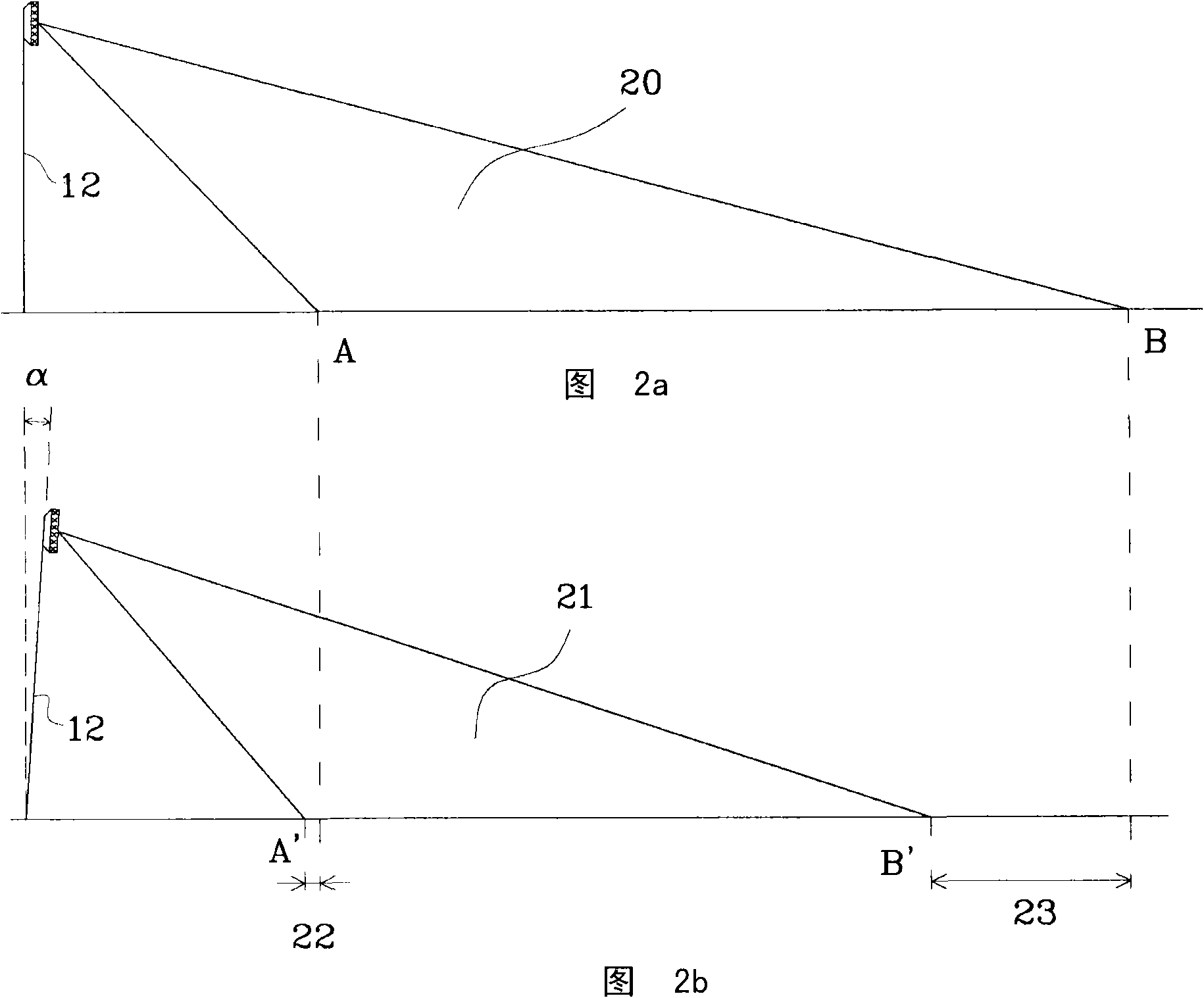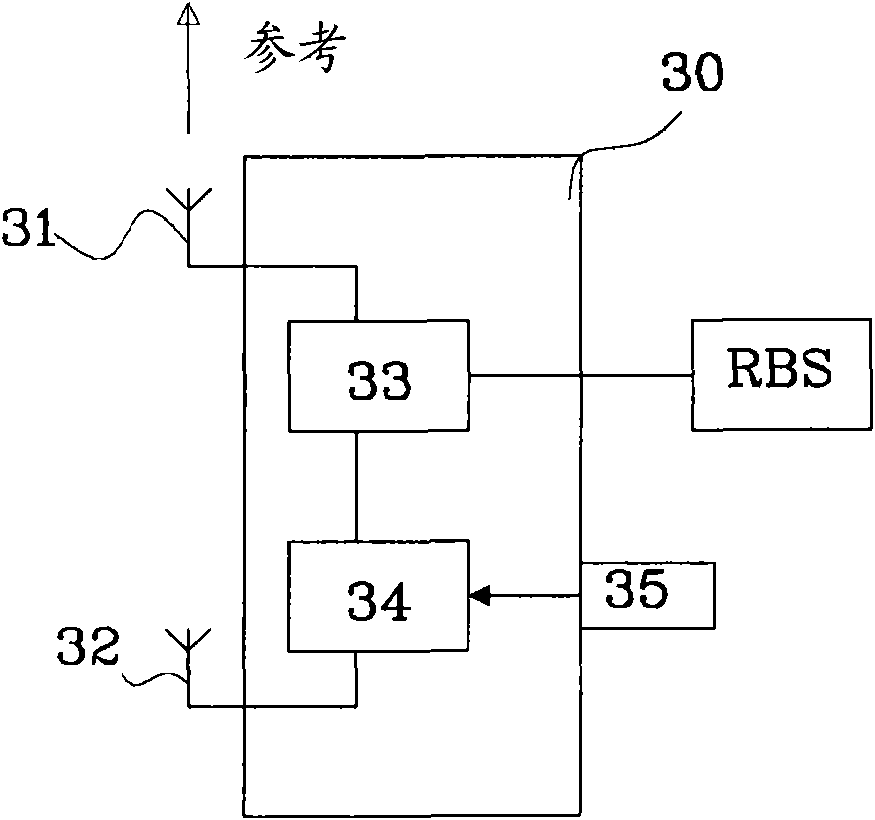A method for compensating a radiation beam by beam steering
A beam pattern, beam technology, applied in antennas, antenna parts, wind load reduction and other directions to achieve the effect of a simple assembly structure
- Summary
- Abstract
- Description
- Claims
- Application Information
AI Technical Summary
Problems solved by technology
Method used
Image
Examples
Embodiment Construction
[0027] Figure 1 depicts a prior art beam steering arrangement 10 to counteract antenna tower sway. One or more sensors 11 are arranged on the antenna structure 12 . The detected sway of the antenna structure 12 is used to control the antenna beam steering logic 13 to dynamically adjust the beam by modifying the drive signal from the radio base station (RBS). The modified drive signal is provided to the antenna elements of antenna 14 .
[0028] Figure 2a The antenna coverage of an unaffected (non-swaying) antenna structure 12 is illustrated, ie the antenna elements are arranged in a vertical reference plane. The antenna beam pattern 20 covers an area extending from point A to point B. As shown in FIG.
[0029] Figure 2b The antenna coverage of an affected (swaying) antenna structure 12 is illustrated, ie the antenna elements are tilted forward by an angle α. The tilted antenna beam pattern 21 covers a significantly smaller area than that of the unaffected antenna structur...
PUM
 Login to View More
Login to View More Abstract
Description
Claims
Application Information
 Login to View More
Login to View More - R&D
- Intellectual Property
- Life Sciences
- Materials
- Tech Scout
- Unparalleled Data Quality
- Higher Quality Content
- 60% Fewer Hallucinations
Browse by: Latest US Patents, China's latest patents, Technical Efficacy Thesaurus, Application Domain, Technology Topic, Popular Technical Reports.
© 2025 PatSnap. All rights reserved.Legal|Privacy policy|Modern Slavery Act Transparency Statement|Sitemap|About US| Contact US: help@patsnap.com



